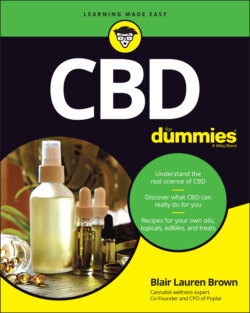Читать книгу CBD For Dummies - Blair Lauren Brown - Страница 53
TALKING ABOUT CLINICAL ENDOCANNABINOID DEFICIENCY
ОглавлениеIt’s no big secret that our human systems are chock full of deficiencies, mostly nutritional. So you probably won’t be surprised when I tell you that we have an endocannabinoid deficiency, too (officially called clinical endocannabinoid deficiency, or CED). This piece of endocannabinoid science is in its theoretical state, much like all cannabinoid and endocannabinoid research.
Endocannabinoid deficiency shows up when your body’s endocannabinoid system is operating in a state of malfunction. Researchers don’t know what could lead to a deficiency in the endocannabinoid system, so they’ve been exploring whether a variety of treatment-resistant syndromes may result from CED. Potential issues linked to CED include fibromyalgia, migraines, chronic fatigue, and irritable bowel syndrome (IBS). Not stuff you want to ignore, even if your body would let you.
Whether CED is the cause of migraines and various other treatment-resistant syndromes is still unclear. What is clear is that a more balanced system can help reduce symptoms from these conditions. Your endocannabinoid system loves balance; this concept of balance is called endocannabinoid tone.
So what, outside of your own bodily capability of producing cannabinoids, can help you meet this deficiency? You can incorporate a few helpful ingredients — such as chocolate (cacao), black pepper, and rosemary — into your diet. And of course, there’s cannabis. The puzzle piece that fits like no other. (Simply or exclusively supplementing with cannabinoids such as CBD may or may not address endocannabinoid tone. No one knows yet.)
(Note: Don’t go searching the internet to see whether you suffer from “clinical endocannabinoid deficiency.” It’s just as new as all other cannabis science, and it’s far less supported than other long-standing theories about deficiencies and treatments in Western medicine.)
This blocking is significant because if THC cannabinoids directly bind to the CB1 and CB2 receptors, you get a psychedelic effect. CBD prevents this “high” sensation. This changed interaction isn’t good or bad; it’s just part of a process.
Interestingly, CBD’s interaction with those receptors can increase the body’s endocannabinoid production by preventing the enzymes that break down endocannabinoids from doing their jobs. In your body, increased endocannabinoid production can potentially be beneficial (see the nearby sidebar for more information).
